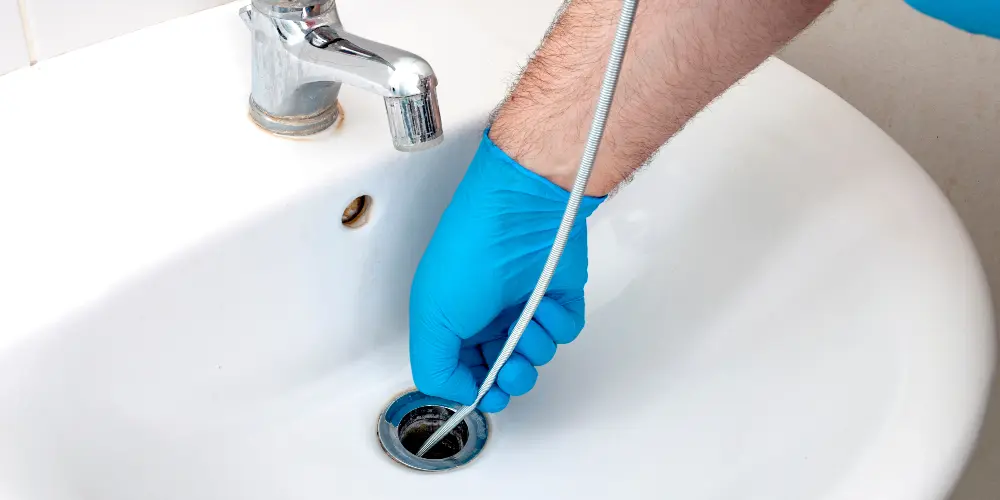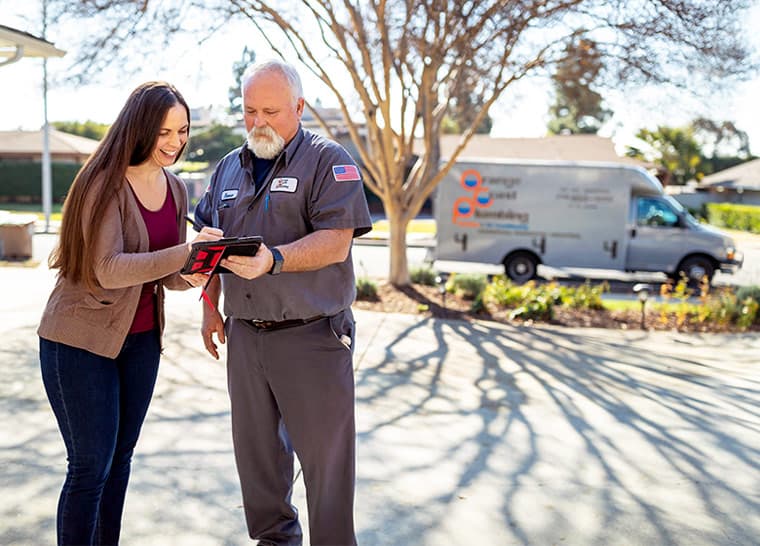Dealing with a clogged drain is a frequent frustration for any homeowner with older plumbing. Or toddlers. Or teenagers who dump who knows what down the pipes.
Sometimes, a few pumps with a plumber’s friend will clear it, or even a concoction of baking soda and vinegar.
Other times, no amount of plunging or concocting will clear that stubborn clog. Even drain cleaning products may not work, and there’s always a risk of damage to your pipes.
What can you do, short of calling the plumber for professional repairs?
Enter the trusty plumbing snake, your ultimate weapon against immovable clogs. In this guide, we’ll walk you through the ins and outs of this nifty tool.
Knowing Your Clogs
These are the most common culprits that could be jamming your pipes:
- Hair Clogs: The bane of shower drains, hair can build up and form clogs (with soap scum as a binder). Plumbing snakes effectively clear hair clogs, after which you might consider a hair catcher for your drain.
- Food Particles: Bits of food can get stuck in the pipe. Try using a sink strainer to catch food particles, and remember, certain things like coffee grounds and grease should never go down the drain!
- Soap Scum: Soap residue can accumulate in pipes, causing slow drainage or complete clogs. Plumbing snakes can tackle these, but regular cleaning with baking soda, vinegar, and hot water can help prevent buildup.
- Toilet Paper and Hygiene Products: These can easily clog toilets, in which case, a toilet auger is your preferred tool. Only toilet paper should be flushed down the toilet; even then, don’t go overboard!
- Tree Roots: Tree roots can infiltrate your sewer pipe, causing severe blockages. These need professional attention, often requiring root system removal or even pipe replacement.
How to Use a Plumbing Snake
Getting Started: What’s a Plumbing Snake?
A plumbing snake, or a drain auger, is a flexible, elongated coil that maneuvers through pipes, dislodging blockages to restore proper drainage.
Available in various lengths and styles, snakes wield a coiled wire or blade at the end, designed to snag, break apart, or pull out obstructions causing the clog.
Are Plumbing Snakes Safe for Toilets?
Standard plumbing snakes can scratch the porcelain of your toilet bowl. So, if you’re a beginner, consider a different tool: the toilet auger.
A toilet auger is specially designed for toilet clogs. It’s coated with plastic or rubber, which protects your toilet bowl from scratches. Its shape allows it to reach further into the toilet trap, making it safer and more effective for toilet clogs.
So, in a nutshell, yes, you can use a plumbing snake for your toilet, but a toilet auger is your best bet. It’s all about choosing the right tool for the job.
Safety Concerns
- Always wear latex gloves to protect your hands from grime or sharp objects lodged in the pipe.
- Protective eyewear safeguards your eyes from potentially harmful splashes and debris.
- Avoid using chemicals before or after snaking. They can harm your pipes, and hurt you if they splash back.
- Be patient and gentle. Never force the snake too aggressively, as this can damage the pipes or the tool.
Choosing Your Plumbing Snake
- Length Matters: Measure or estimate the depth of your pipes to select a snake long enough to reach the clog without difficulty.
- Type of Snake: There are handheld manual snakes and motorized snakes. Motorized snakes are more powerful and suitable for heavy-duty clogs, while manual snakes require physical strength but offer more control.
- Cable Diameter: The cable diameter should fit your pipes. A too-large cable can get stuck or cause damage, while a too-small cable may not be effective.
Clearing the Clog
Now, for the main event — unclogging that nettlesome drain! Follow these steps for a hassle-free experience:
- Prepare the Area: Clear the workspace around the drain, ensuring easy access to the pipe. Placing towels or a bucket strategically to catch any water that might splash out.
- Insert the Snake: Gently insert the snake into the drain until you feel resistance. This indicates you’ve reached the clog.
- Rotate the Snake: Start turning the handle clockwise, slowly feeding the snake into the pipe. The snake’s end should catch onto the clog.
- Break the Clog: Apply gentle pressure while rotating the snake. You’ll feel the resistance decrease as the snake breaks through the blockage.
- Retract the Snake: Once the clog is cleared, carefully retract the snake, ensuring it doesn’t get stuck or cause further damage.
What to Do When Snaking Fails
Sometimes, no matter how much you snake, the clog won’t budge. Or perhaps you’ve cleared the clog, but the drains are still slow, or they keep getting blocked again.
This could be a sign of a bigger issue, such as a tree root invasion or a damaged or collapsed pipe. In such cases, it’s time to call in professional help.
A professional plumber has specialized tools and knowledge to diagnose and correct these more complex issues. For instance, they might use a camera to inspect your pipes from the inside, identifying exactly where and what the problem is. This could reveal tree roots intruding into the pipe, a bellied pipe (sunk lower in one area), or even a fully collapsed pipe.
Or, if your pipes are old and corroded, you might need complete pipe replacement. While this is a more extensive and costly job, it can save you from recurrent clogs and the damage they can cause. It also allows you to upgrade to more durable, modern pipes that can last for decades.
While DIY is great for simple clogs, sometimes it’s best to hand the reins to a professional. Call Orange Coast Plumbing for repairs if you live in Orange County, CA. We guarantee our work and operate 24/7 for emergencies. Call us today at 714-953-1111.
FAQs about Plumbing Snakes
Q: Can I use a plumbing snake on any drain?
A: Plumbing snakes can be used on sinks, showers, bathtubs, and even toilets (though not recommended for toilets). Just be sure you choose the right size and type for the drain.
Q: Are there any safety precautions I should take?
A: Wear protective gloves and eyewear to shield yourself from debris or splashes. Avoid excessive force to prevent damaging the pipes.
Q: What if the clog persists after using a plumbing snake?
A: If the clog persists, it might indicate a more severe issue. Consider calling a professional plumber to assess and resolve the problem.
Q: Can I rent a plumbing snake instead of buying one?
A: Many home improvement stores offer plumbing snake rentals for short-term projects. This can be cost-effective if you plan to use the tool sparingly.
Q: Can plumbing snakes damage pipes?
A: Yes, if misused. That’s why it’s so important to use them gently and avoid forcing them into the pipe.
Q: Is it possible to snake a drain too much?
A: Yes, overuse of a plumbing snake can lead to pipe damage. If you frequently snake the same drain, it might indicate a more significant issue requiring professional attention.
Q: Can I use a plumbing snake on a toilet?
A: While you can use a plumbing snake on a toilet, we don’t recommend it. The porcelain of a toilet bowl can be easily scratched. Instead, use a tool designed specifically for the task, like a toilet auger.
Q: Are there alternatives to a plumbing snake for clearing clogs?
A: Alternatives include a plunger, a closet auger, or a drain cleaning bladder. A mixture of vinegar and baking soda can be effective for minor clogs.
Q: How do I clean a plumbing snake after use?
A: After using a plumbing snake, clean it with warm water and a mild detergent. Dry it thoroughly to prevent rust.
Q: What materials are plumbing snakes made of?
A: Most plumbing snakes are made of flexible metal cable, allowing them to navigate a pipe’s bends and turns. Some have a plastic or rubber coating to protect pipes from damage.


